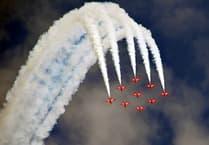On December 15 1577, Francis Drake embarked on his circumnavigation, which had been authorised by Queen Elizabeth I and which became known as Drake’s Raiding Expedition.
Although Drake called it a ‘voyage of discovery’ it was in fact an ambitious raiding operation marking the start of England’s challenge to global domination of Spain and Portugal.
After capturing Spanish and Portuguese ships while crossing the Atlantic he passed Cape Horn and became the first Englishman to navigate the Straits of Magellan.
After reaching the Pacific Ocean in October 1578, he sailed up the west coast of South America. Due to the losses by storms and disease only two of the original five ships remained, one of which was the Golden Hind.
Drake then plundered Spanish ports and took a number of Spanish treasure ships. After continuing north, hoping to find a route across the Atlantic, Drake sailed up further the west coast of America than any European had ever done. He landed in present-day California claiming the land for England and naming it New Albion.
Unable to find a passage, Drake turned south on the Golden Hind, nw the only remaining vessel, and in July 1579 sailed west across the Pacific. His journey took him to Moluccas, Celebes, Java, and then round the Cape of Good Hope and finally the western tip of Africa.
Drake arrived in England in September 1580 with a rich cargo of spices and treasure and the distinct of people the second man to circumnavigate the globe and the first Englishman to do so.
Seven months later, Queen Elizabeth I knighted him on the Golden Hind much to the annoyance of King Phillip II of Spain because of his practical actions. As a result, the voyage was one of the precursors of the Anglo-Spanish War.
There will be no meeting for the Linton and District History Society in January. On Wednesday, February 7, Fiona Morrison will be speaking about L’Appel- Charles de Gaulle and the crisis of 1940- 7 for 7:30pm at Linton Village Hall



